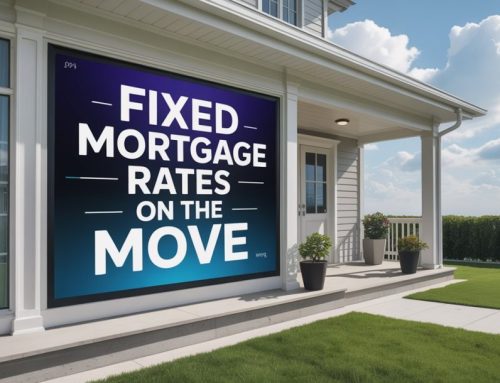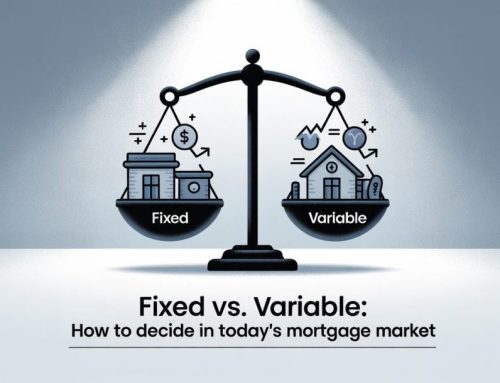At the beginning of 2022, economists were forecasting that the Bank of Canada’s overnight rate would increase four to five times, all at the standard 0.25% per hike. This would have meant a total rate increase of 1.00% to 1.25% for the year.
Instead, we saw it increase by a whopping 4.00% with an additional 0.25% at in late January 2023. Seven increases in 2022 with six being oversized (greater than 0.25%) which is what caught everyone off guard. Prior to 2022, the last oversized rate increase was May 17, 2000 when it increased by 0.50%. They are indeed rare.
In their first rate announcement of 2022, the Bank of Canada was forecasting inflation of 3% by the end of 2022. In reality, 7% would have been a more accurate guess. In a recent interview with the Globe and Mail, BoC Governor Tiff Macklem stated that this was a “very big forecast error” and that “they have some explaining to do”.
Here’s an excerpt from the article:
“The Bank of Canada’s experience is not unique. Central bankers around the world missed the mark on rising inflation through 2021 and early 2022. This episode is probably the biggest failure of monetary policy in the three decades that central banks have pursued inflation targeting.”
Here’s the link to the full article:
Bank of Canada missed the mark on rising inflation, Tiff Macklem says, but a turnaround is near
Everyone With a Variable Rate Mortgage is Feeling the Pinch
For those on a variable rate with floating payments (also known as an adjustable rate) the 4.25% increase over the past year would have resulted in a payment increase of more than $200 per month for each $100,000 owed. On a $500,000 mortgage, this works out to more than $1,000 per month*.
In the Globe article, Macklem acknowledged that “Everyone’s lives have been hugely disrupted.”
I’d say that’s an understatement.
Fixed Rates Are Now Lower Than Variable Rates
Variable rates are usually lower than their fixed rate alternatives. Over my fifteen-year career, the only exceptions were in late 2008, early 2020 (pre-pandemic) and late 2022/early 2023.
The majority of people currently in variable rate mortgages would be paying somewhere between 5.20% to 6.20% with the odd exception.
5 year fixed rates currently range from 4.44% to 4.99%** for the same range of products. This means that you could potentially lower your interest rate by 0.76% to 1.21%. This could mean a payment difference of anywhere from $210 to roughly $346 per month.
Converting to the Lowest Fixed Rate on the Market
Now that we have an idea of the lowest mortgage rates available, would it make sense to make the move?
There are three things that you need to consider before making the choice:
- Penalty
- Penalty capitalization limit
- Rate forecasts
Penalty
Higher rates will also mean higher penalties. If you currently owe $650,000 with a variable rate of 5.70% then your penalty would be $9,262.50 in most cases (not including the discharge fee of roughly $350). While there are currently some cash-back promos available, they would not come anywhere close to covering the penalty. Don’t expect the new lender to cover it either. They never have and never will. Contrary to popular belief, lenders are not making hundreds of thousands of dollars in profit off your mortgage… despite how much interest you’re paying to them. (The interest is not the lender’s profit).
Penalty capitalization limit
The lowest mortgage rates are often found with transfers. That is, you’re transferring your existing mortgage from one lender to another, just at a lower rate. This is also referred to as a switch.
You cannot increase your amortization during a switch, nor can you increase the loan amount if you need to take out additional equity.
The capitalization limit on switches is only $3,000. This means that you can only add up to $3,000 of the penalty to the new mortgage. If your penalty was $9,262.50 as explained above, then you would need to fork out the remaining $6,262.50 out of pocket. That’s a fair chunk of change to come out of your wallet.
Rate forecast
As we learned from the forecasts in early 2022, they can be radically wrong. But that doesn’t mean they should be ignored. There were multiple unexpected disruptions to the already weakened supply chain in 2022, which is why they veered so far off their projected course. The most notable was the war in Ukraine. Unforeseen events can drastically shift current forecasts in either direction. In early 2020 economists were forecasting anywhere from no change from the Bank of Canada to a few 0.25% cuts at the most.
And what happened?
The pandemic broke resulting in the Bank slashing their rate by 1.50% within just a few short weeks. Regardless of how right or how wrong, forecasts are our only hope in trying to have an idea of where rates are heading.
We know that the rate-hiking madness of 2022 will almost certainly force us into a recession. Once inflation is under control, the Bank of Canada will need to shift their focus to restoring the economy by cutting their rate. Three of the big six banks are forecasting cuts to begin in the fourth quarter of this year with the other three predicting that the cuts won’t start until the first quarter of 2024.
For this reason, I’m not recommending 5 year fixed rates these days.
But that doesn’t mean that 5 year fixed rates aren’t right for anyone. If you’re worried that the forecasts might be wrong again and want to guarantee yourself a rate and payment for a longer period, then a 5 year fixed rate may be the best choice. As I always say, the best choice isn’t the one that saves you the most money. It’s the one that allows you to sleep soundly at night.
Converting to a Variable Rate With Your Current Lender
Given the higher penalties and out-of-pocket expenses, you’ll also want to check with your current lender to see what they can offer you if you were to lock into a fixed directly with them. I would not expect a deal here as they know what it will cost you to leave them. Sure, you can try bargaining, but you don’t have any power in this case. The rate will likely be higher than what you would expect from other lenders, but you’ll eliminate the break penalties.
Conclusion
Watching rates and payments rise as fast as they did was painful for many. There is nothing wrong with locking in if that’s what you are most comfortable with. Just as there is nothing wrong with riding out your current variable rate.
Many believe that the January 25th BOC increase was the last in this vicious cycle. If the Bank remains on track with achieving their 3% inflation target by mid-2023 and 2% by the end of 2024, then those who rode out the variable will likely be glad they did.
But as always, I want to be very clear. Anything can happen.
There is no guarantee that rates won’t continue to rise.
There is no guarantee that inflation will continue to trend downward.
You have to do what you feel is best for you personally. We’re always happy to advise you as we would do our own mother, father, brother or sister. While we can’t make the choice for you, we can talk you through it to help you to make the decision that you feel most comfortable with.
*exact payment difference will vary with discount off prime and amortization.
** Rates can vary depending on down payment percentage, purchase price, amortization, usage of property, transaction type, etc. I explain this in detail in my blog on Why Different People are Quoted Different Rates







